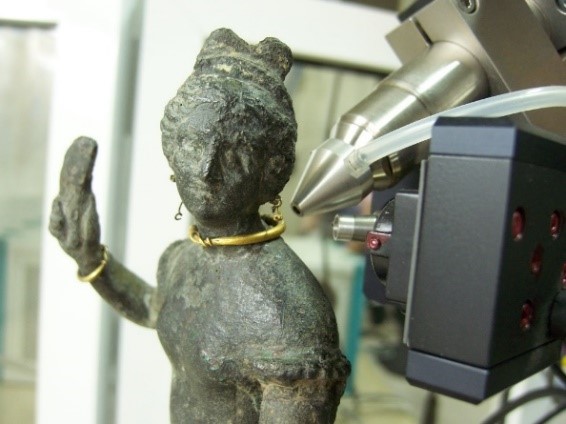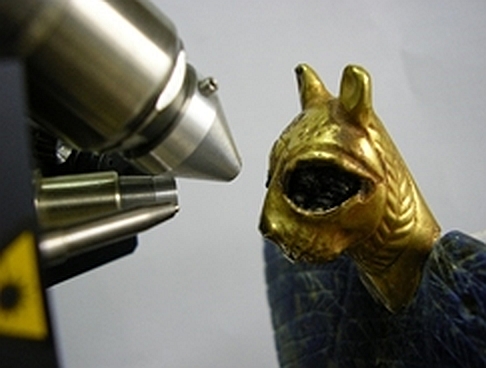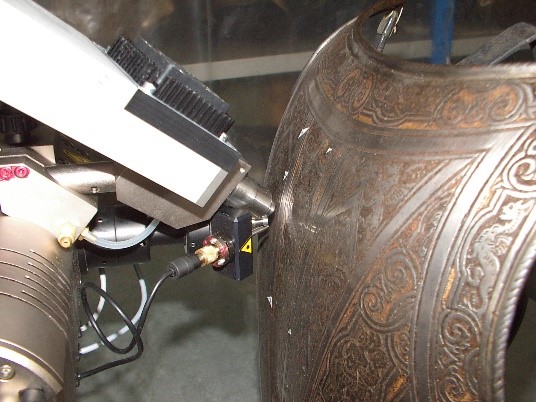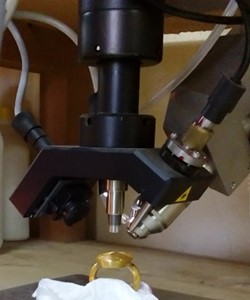The portable micro-XRF spectrometer is a customized version of the Artax (Bruker Nano) spectrometer composed by the following X-ray instrumentation components: an X-ray microfocus Rh-anode tube (spot size 50×50 μm, max 50 kV, max 1 mA, 30-W maximum power consumption, Be window 0.2-mm thickness) and a polycapillary X-ray lens as a focusing optical element (IfG) with a focal distance of about 21.2 mm. The X-ray detection chain consists of a thermoelectrically cooled 10-mm2 silicon drift detector (X-Flash, 1000B) with 146 eV FWHM at 10 kcps coupled with a digital signal processor. A color CCD camera (with approximately ×13 times magnification) combined with a dimmable white LED and a spot laser beam ensures reproducible positioning of the measuring probe, as well as visualization and documentation of the analyzed area. Three stepping motors coupled with the spectrometer head allow three-dimensional movement for elemental mapping and precise setting of the analysis spot at the focal distance of the polycapillary X-ray lens. Various customized filters are used to improve the monochromaticity of the exciting beam and to avoid the presence of diffraction patterns in the spectrum, when polycrystalline materials are analyzed. The spatial resolution of the micro-XRF spectrometer is in the range 31-76 μm for characteristic X-rays of energies between 22 and 4.5 keV, respectively. For the quantification of the micro-XRF measurements (i.e., determination of the concentration of the sample constituent elements), a custom-made software has been developed based on the so-called fundamental parameters approach in XRF analysis. The procurement of the customized Artax micro-XRF spectrometer was supported by the PROMET project (Project ID: 509126), FP6-STREP Project, (2004 –2008).


The probe of the micro-XRF spectrometer during in-situ analyses of gilded artefacts at the Archaeological Museum of Damascus, Syria within the framework of PROMET FP6 project


The probe of the micro-XRF spectrometer during in-situ analyses of gilded armoury at the Armoury Museum in Malta (left, within the framework of PROMET FP6 project) and during the analysis of one of the four Mycenean gold signet rings recently excavated from the Griffin Warrior tomb at the Nestor Palace in Pylos
